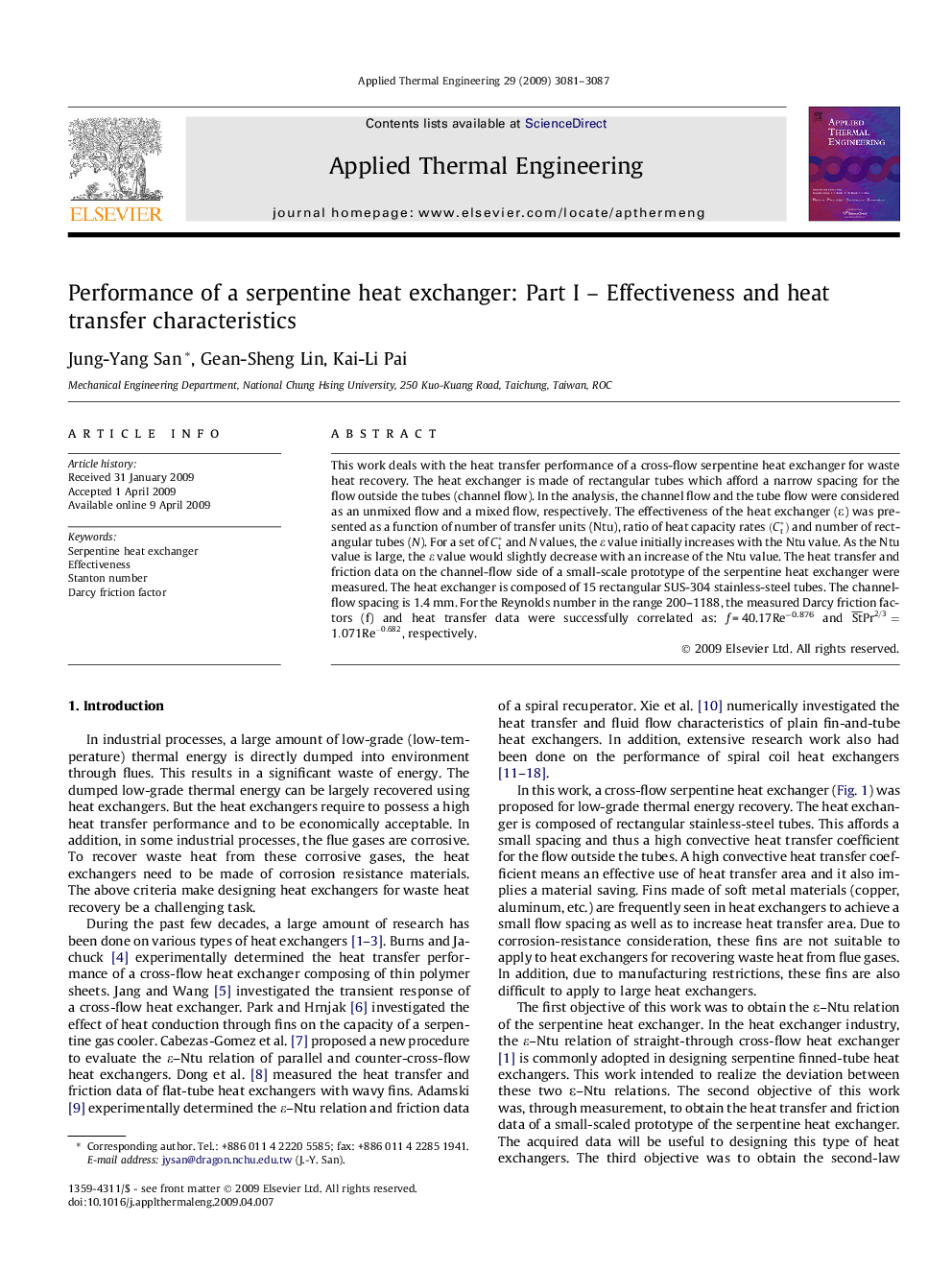| Article ID | Journal | Published Year | Pages | File Type |
|---|---|---|---|---|
| 648798 | Applied Thermal Engineering | 2009 | 7 Pages |
Abstract
This work deals with the heat transfer performance of a cross-flow serpentine heat exchanger for waste heat recovery. The heat exchanger is made of rectangular tubes which afford a narrow spacing for the flow outside the tubes (channel flow). In the analysis, the channel flow and the tube flow were considered as an unmixed flow and a mixed flow, respectively. The effectiveness of the heat exchanger (ε) was presented as a function of number of transfer units (Ntu), ratio of heat capacity rates (Ctâ) and number of rectangular tubes (N). For a set of Ctâ and N values, the ε value initially increases with the Ntu value. As the Ntu value is large, the ε value would slightly decrease with an increase of the Ntu value. The heat transfer and friction data on the channel-flow side of a small-scale prototype of the serpentine heat exchanger were measured. The heat exchanger is composed of 15 rectangular SUS-304 stainless-steel tubes. The channel-flow spacing is 1.4 mm. For the Reynolds number in the range 200-1188, the measured Darcy friction factors (f) and heat transfer data were successfully correlated as: f = 40.17Reâ0.876 and St¯Pr2/3=1.071Re-0.682, respectively.
Related Topics
Physical Sciences and Engineering
Chemical Engineering
Fluid Flow and Transfer Processes
Authors
Jung-Yang San, Gean-Sheng Lin, Kai-Li Pai,
